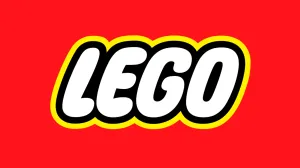Everdell: Pearlbrook is a fantastic first expansion for one of the top worker placement tabletop games available today. In 2018, Starling Games released Everdell, an innovative tabletop game that evoked the aesthetics of Redwall and Watership Down. In Everdell, players build and populate their own cities, competing with other players for resources and victory points. Each turn, players either place a worker on a space to collect resources or spend resources to play a card onto their own city. When a player runs out of workers and playable cards, they prepare for the next season by gathering their workers from the board and adding more workers from the Evertree, the massive 3D tree that serves as a centerplace to the game.
Videos by ComicBook.com
One of the core parts of Everdell is using a player’s city to chain together future moves and options. Each Construction and Critter added to a city gives players different benefits, granting players access to certain resources, the ability to draw cards, or the ability to play future cards for less resources. Each Construction is also linked to a Critter, allowing a player to add the linked Critter to their city for free once the Construction is built. Figuring out the best ways to maximize your turn is one of the best parts of Everdell, particularly when it results in scoring Victory Points via an event. A key part of Everdell is its accessibility – players can quickly learn how to play the game and can usually understand the game’s winning strategies after only a turn or two.
Earlier this year, Starling Games released Everdell: Pearlbrook, a new expansion that adds a new board, a new resource, a new type of worker, and a new type of card that can be added to cities. Most of Everdell: Pearlbrook centers around Pearls – a new type of resource that can be collected by a special “River Ambassador” worker that’s available to players from the start of the game. Pearls can be collected via one of several ways – players can send their River Ambassador to the Shoal and discard resources and cards for a pearl, or they can visit one of four River Destinations that open once a player’s city reaches certain milestones. The first player to visit a Destination gets a free Pearl, and each destination adds additional trade-in options.

The Pearls are deliberately a premium resource and aren’t used to build Constructions or attract Critters like Everdell’s other resources. Instead, Pearls are used either to add Adornments or Wonders to the city, both of which give players Victory Points. Adornments are unique items given to players at the beginning of the game and cost 1 Pearl each. Players get an immediate benefit by adding an Adornment to their city and each Adornment also gives players a number of Victory Points at the end of the game. Wonders replace Everdell’s basic events and are obtained by exchanging Pearls and other resources. You’ll have to quickly decide whether to chase after a Wonder at the beginning of the game, but each one is worth a ton of Victory Points.
In addition to Pearls, Everdell: Pearlbrook also adds new Forest locations, new events, and new Constructions and Critters to the game. Honestly, I thought these were the big addition to Pearlbrook, particularly as they help balance and correct some of the game’s inadvertent issues. Several of the new locations make resource gathering a lot easier, or help cycle cards from the Meadow, a common area where cards are displayed for anyone to take. These add a lot more options for players, particularly when it comes to obtaining pebbles, which were the hardest resource to obtain in the base game.
I enjoyed that Everdell: Pearlbrook found a way to add options to the core game without adding much new complexity. Since one of Everdell‘s most appealing traits is the game’s ease of play, I was initially concerned that Pearlbrook would add a layer of needless complexity that required a lot of additional explanation or rules. However, Pearlbrook mostly keeps to itself, accessible only via one particular type of Worker, and adding a layer to the game that players can choose to ignore if they wish. One of the players I played with skipped the Pearls entirely, choosing to focus on Everdell’s other building options as they quickly determined that the Pearls weren’t worth the hassle. They still benefited the Critters, Constructions, and Forest Locations added by Pearlbrook, but they simply skipped the Pearlbrook River board and focused on the core Everdell game play.
My only major frustration with Everdell: Pearlbrook is that the new board takes up a ton of space in addition to what’s already a large board. The core game and the Pearlbrook board took up 75% of my large coffee table – making it larger than just about any other game I’ve played this year. If you have a cramped gaming space, you’ll need to get creative to make Everdell and Pearlbrook work, particularly when dealing with four players and their cities as well.
Everdell: Pearlbrook is a great addition to Everdell, which adds options and a little extra depth without fundamentally altering the core gameplay. Many tabletop game expansions entirely transform a game, which usually makes mastering the expansion fundamental to victory. With Pearlbrook, players will have more options, but they won’t suffer if they decide to stick with true and tested mechanics.
Everdell: Pearlbrook will be available for sale later this week. The suggested retail price is $50.00.








